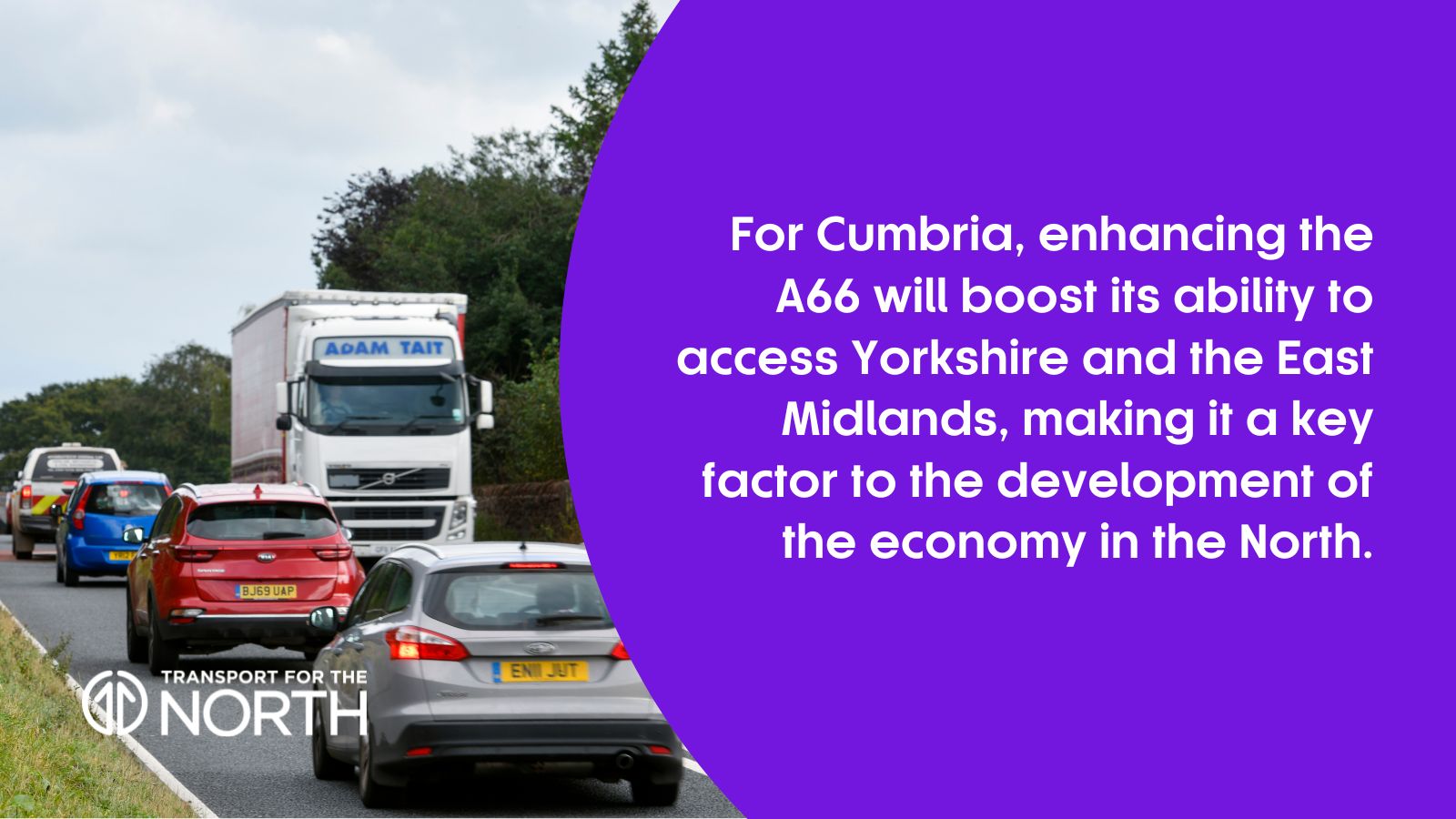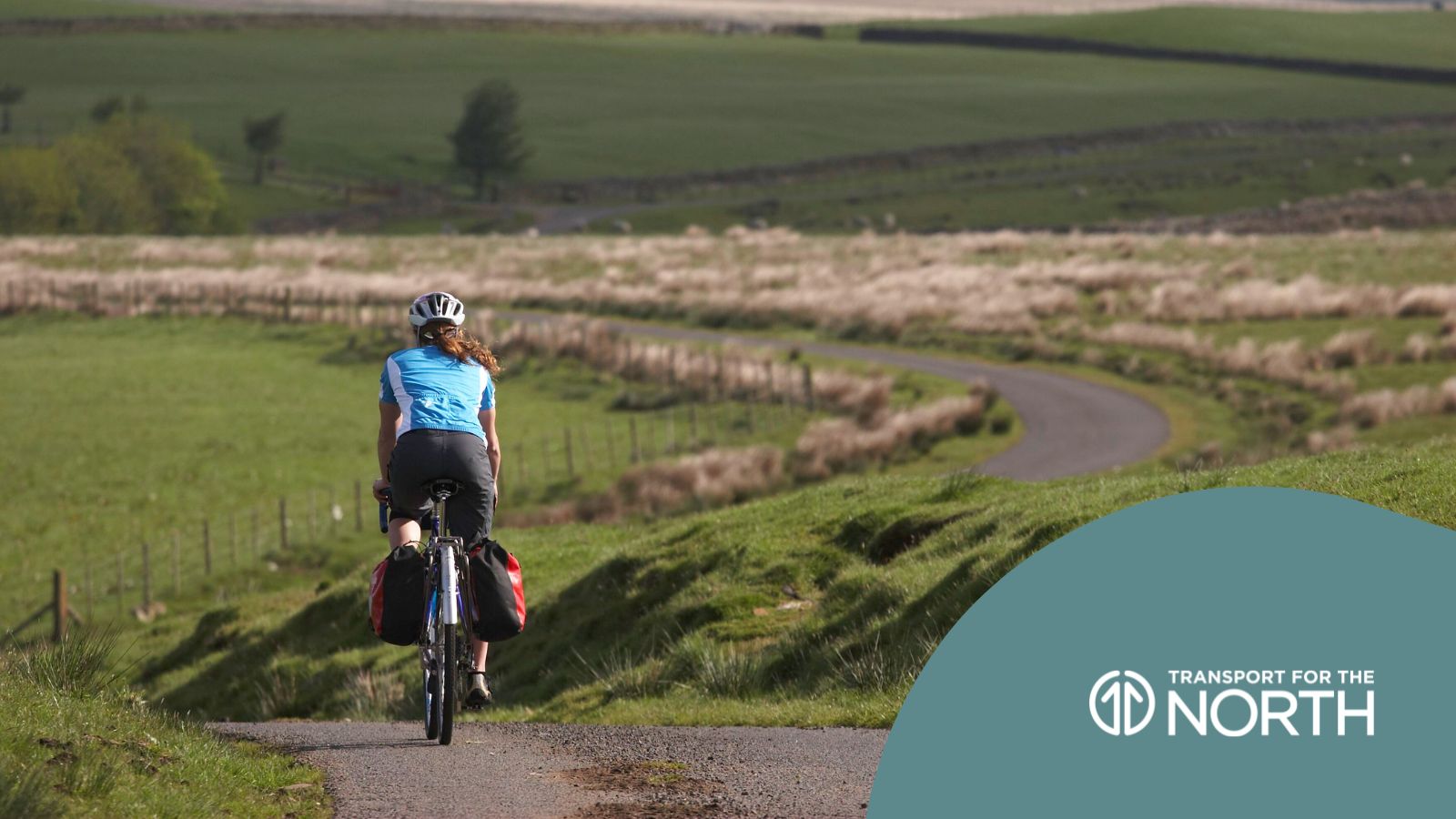In this Insight article we look into the current state of the road network and its importance to people and businesses in Cumbria.
Roads are absolutely crucial for connectivity across all parts of the North.
Investment in our road networks an help improve travel for all, so working to develop Northern transport infrastructure is one of our main aims. This will improve the quality and reliability of our transport systems, making them faster and more efficient for everyone.
We spoke with three local transport authorities to understand just how important their roads are, and why investment is key to unlocking growth potential.

Cumbria is a predominately rural county in the North West of England, home to the Lake District National Park, containing England’s highest mountains and some of its biggest lakes.
The rural nature of much of the area means its residents need to travel to access learning, jobs and leisure.
The longest motorway in England, the M6, runs through Cumbria and offers a strong north to south spine in the east of the county. It also creates vast opportunities for the tourism sector.
Despite the M6’s great North to South link, Cllr Keith Little, Cumbria County Council’s Cabinet Member for Highways and Transport, explained: “The east to west connections across Cumbria present some real reliability and resilience challenges and, as such, the upgrade of routes like the A595, A590, A66 and A69 is very important.
“The A595 is a primary route in Cumbria that starts in Carlisle, passes through Whitehaven and runs close to Workington, Cockermouth and Wigton.”

Plans to upgrade are important in supporting the connectivity role of the A595, which runs along the coast from Barrow-in-Furness to Carlisle, with improvements needed at Bothel and Grizebeck.
The delivery of the Carlisle Southern Link Road (CLSR), which was approved in October 2020 will see the connection of Junction 42 to the A595 to the South of Carlisle. The CLSR is currently being progressed and will help to support delivery of a transformational Garden Village to the south of the city, which will see around 10,000 new homes built.

The A66 is a major road in the North of England. It plays a key role in national and regional links for a range of traffic for east and west journeys and provides vital connections for freight and businesses in the region.
This busy and important route serves a high level of freight traffic across the UK and an upgrade will be fundamental to freight and tourism journeys.
The A66 is of particular importance to tourists as it gives access to Cumbria’s Lake District National Park and the North Pennines Area of Outstanding Beauty, which can be found to the east of Carlisle.
For Cumbria, enhancing the A66 will boost its ability to access Yorkshire and the East Midlands, making it a key factor to the development of the economy in the North.
This enhancement will not only help support the economy but also strengthen the important role of Cumbria on national networks.
The upgrade of the A66 will improve connections to the ports in Scotland and Northern Ireland and those in Hull, allowing more support for freight traffic.

Active travel, which includes the likes of walking and cycling, is good for our physical and mental health.
Switching more of our day-to-day journeys to an active travel option, will likely have a positive impact on our health, quality of life and the environment. All these factors will not only benefit individual people but the community as a whole.
Active travel is also deemed essential to the success of our towns, as it gives people in the community a real choice around how they travel. This green form of travel will help support their health and wellbeing as well as driving clean growth in our towns and cities.
In recognising this, Cumbria is bringing forward a programme of six local cycling and walking investment plans in the key towns across the county. This will help work towards the UK Government’s overall goal of being net zero carbon by 2050, and improve access to first and last mile journey options across the region.
The Pandemic saw an increase in walking and cycling, with peaks of active travel reaching 300% above the normal rate. As the interest in micromobility grows, it’s important the infrastructure and facilities are available for regions to capitalise on these travel changes by providing a cheap, fast and sustainable modes of transport in town centres.

Talking about The National Roads Fund (NRF), Cllr Keith Little added: “NRF bids are key for Cumbria, and the support of this fund is seen as essential if road networks within our county are to be meaningfully enhanced.
“It is with the help of the fund that Cumbria was able to secure improvements to the A595.”
At Transport for the North, we worked with Cumbria County Council to submit a bid for further funding for the A595 along with the Kendal Northern Access Route.
These schemes can help reduce congestion, improve reliability, and support local housing and business growth.
Continued investment in our roads is vital to the success of the Northern economy in the future.
As such, Cumbria has been ensuring our partners understand the importance of investment to the region, and with that, the importance of Cumbria to the wider UK economy.